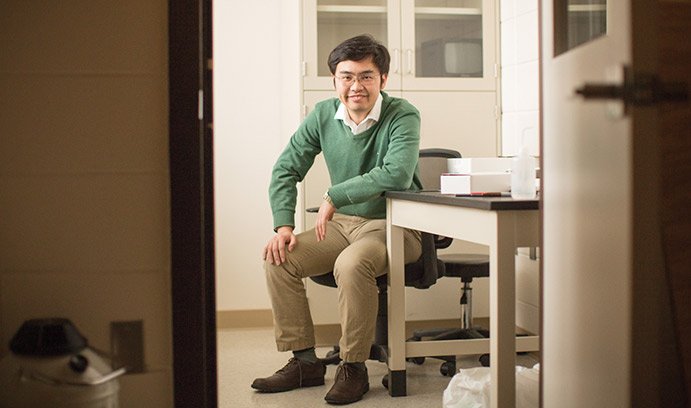Breaking the Optical Barrier
Nanotechnology mainly consists of the identification, manipulation and control of materials by individual atoms or molecules. Observing properties of nanomaterials has limitations due to their extremely small size, but chemist Xiaoji Xu has discovered a method to observe these properties at a smaller scale than previously thought possible.
Optical imaging at the nanoscale is difficult. To put a nanometer into context, a human hair is approximately 100,000 nanometers wide. At this small scale, the application of optical microscopy is limited because its resolution is bound by the diffraction limit, which is approximately half the wavelength of light.
"We can now bypass this physical barrier, allowing us to obtain high spatial resolution at 10 nanometers. We can map it relative to the chemical composition of the sample on a surface," says Xu, assistant professor of chemistry.
Scattering-type scanning near-field optical microscopy (s-SNOM) uses a sharp metallic tip to enhance and probe the local electric field in a close proximity to a nanometer-sized sample. The presence of the sample under the metallic tip modifies the way light is scattered by the tip according to the dielectric functions, or local electric fields of the sample, which is affected by the presence of electronic, vibrational or polaritonic resonances.
Xu and his team use s-SNOM to detect optical signal from the sample's surface to bypass the diffraction limit. They have developed a new method to reconstruct the vertical near-field interaction in s-SNOM, and their work is shedding light on the behaviors of locally bound electromagnetic field of polaritonic nanomaterials. He can obtain additional information other researchers have been unable to attain. His findings have application in fields of energy transfers in organic photovoltaics, where the light-harvest domains and charge-accepting domains form fissures much less than 100 nanometers.
"We hope this new method, which currently is exclusive to Lehigh, will provide a new tool to study materials such as polymer blends in photovoltaics, plasmonic nanostructures and 2-D materials such as graphene and boron nitride for the next generation of electronics," says Xu. "We can achieve something nobody else has been able to do."
Posted on:


